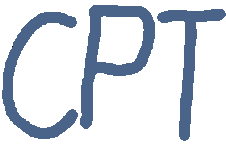
|
Calendar of Physics Talks Vienna
| Exploring similarities between classical and quantum systems |
| Speaker: | Demetrios CHRISTODOULIDES (CREOL College of Optics and Photonics, University of Central Florida, Orlando) |
| Abstract: | Analogies between different disciplines provide a powerful tool in understanding nature. As such, quantum-classical optical similarities offer new opportunities in manipulating classical optical fields or quantum states. In recent years, many of the ramifications of these concepts have come to fruition on several fronts in the general area of optics. What made this possible are some new advances in structure fabrication and beam synthesis techniques. In this talk, we will provide an overview of our activities in this field. As an example, we will consider accelerating optical wavepackets in the form of Airy beams as a means to bend light for applications in plasmonics, extreme nonlinear optics, and biology. Studying quantum inspired phenomena in artificial optical structures that would have been otherwise impossible to directly observe in their own habitat, like Anderson localization, parity-time (PT) symmetry, Bloch oscillations, Klein tunneling, etc. will be discussed. Finally, the possibility of quantum state engineering in periodic and random optical lattices will be reviewed in this talk. |
| Date: | Mon, 27.05.2013 |
| Time: | 17:30 |
| Location: | TU Wien Freihaus, 2. Stock, Hörsaal 5 (grüner Bereich) |
| Contact: | Stefan Rotter |
| Gitternäherung und Korrelationsungleichungen für euklidische Quantenfelder |
| Speaker: | Jan Schlemmer (Universität Wien) |
| Abstract: | Am Ende der Konstruktion von wechselwirkenden Quantenfeldern im euklidischen
Rahmen muss man die Einschränkung der Theorie auf endliches Volumen wieder entfernen.
Eine Methode diesen "thermodynamischen Limes" zu kontrollieren stellen dabei
Korrelationsungleichungen dar, welche man unter Verwendung einer Gitternäherung aus
der statistischen Mechanik überträgt. Diese Werkzeuge sollen im Vortrag erläutert
werden, ihre Anwendung bei der Diskussion des Übergangs zu unendlichem Volumen wird
dann in einem anschließenden Vortrag in der nächsten Woche erfolgen.
|
| Date: | Tue, 28.05.2013 |
| Time: | 14:15 |
| Location: | Erwin Schrödinger-Hörsaal, Boltzmanngasse 5, 5. Stock |
| Contact: | J. Yngvason |
| Femtosecond Laser Surface Nano- and Micro- Structuring of Solids: Fundamentals and Applications |
| Speaker: | Sergey V. Makarov (Lebedev Physics Institute of the Russian Academy of Sciences, Moscow/Russia) |
| Abstract: | In principle the resolution of laser nano- and microstructuring is limited by the wavelength of the light or by heat diffusion. However, recent progress in femtosecond laser technologies enables us to break these limitations owing to suppression of heat transport and the strong nonlinear/nonstationary character of light-matter interaction.
This report will be focused on direct nanostructuring of metals and semiconductors under femtosecond laser irradiation, considering a wide range of processes such as surface ultrafast photo-ecxitation, melting, ablation and excitation of intense surface plasmons.
Some possible applications of obtained nano-/microstructures will also be presented.
|
| Date: | Tue, 28.05.2013 |
| Time: | 16:00 |
| Location: | Technische Universität Wien, Institut für Angewandte Physik, Seminarraum 134A, Turm B (gelbe Leitfarbe), 5. OG, 1040 Wien, Wiedner Hauptstraße 8-10 |
| Contact: | Ao.Univ.Prof. Dr. Wolfgang Husinsky |
| Nanoscale atom traps based on quantum vacuum forces |
| Speaker: | Darrick CHANG (Theoretical Quantum-Nano Photonics, ICFO Barcelona) |
| Abstract: | Forces arising from quantum vacuum fluctuations (such as the Casimir or London-van der Waals forces) are often dominant at the nanoscale. In the context of atoms, these forces can easily destabilize the relatively weak trapping potentials imposed by external optical fields near dielectric surfaces. On the other hand, being able to leverage strong quantum vacuum forces for trapping could allow for new opportunities in constructing atom-nanophotonics interfaces and realizing new parameter regimes for ultracold atoms. Here, we describe a novel theoretical concept wherein specially engineered dispersion in nanophotonic systems can enable a mechanism for vacuum force trapping. Ongoing efforts to apply this technique to realistic systems will also be discussed. |
| Date: | Tue, 28.05.2013 |
| Time: | 16:00 |
| Location: | TU Wien Atominstitut, Hörsaal, Stadionallee 2, 1020 Wien |
| Contact: | Peter Rabl |
| Charge - size inequality for real objects |
| Speaker: | Marcelo Rubio (Cordoba, Argentina) |
| Abstract: | Geometric inequalities have been of interest in General Relativity in recent years. From them,
it is possible to relate physical quantities that have a precise geometric meaning--like mass, area,
charge and angular momentum--, and thus be able to predict significant consequences on the
evolution and stability of some physical systems. In this talk, I present a conjecture relating the
electrical charge to the size of a real object, inspired on the hoop conjecture valid for black holes.
First I discuss briefly some relevant aspects of the hoop conjecture and then I state the analogous
conjecture for real objects in general. Physical motivation of the inequality is discussed, as well as
define with precision what we understand about the "size” of a three dimensional object. As a first
approach, I study the spherical problem with ECD wherein this conjecture is precisely formulated
and I show that it is true outside and in the bound of the sphere.
|
| Date: | Wed, 29.05.2013 |
| Time: | 17:00 |
| Location: | Währinger Straße 17, Common Room, 1. Stock |
| Contact: | P. Chrusciel |
|
